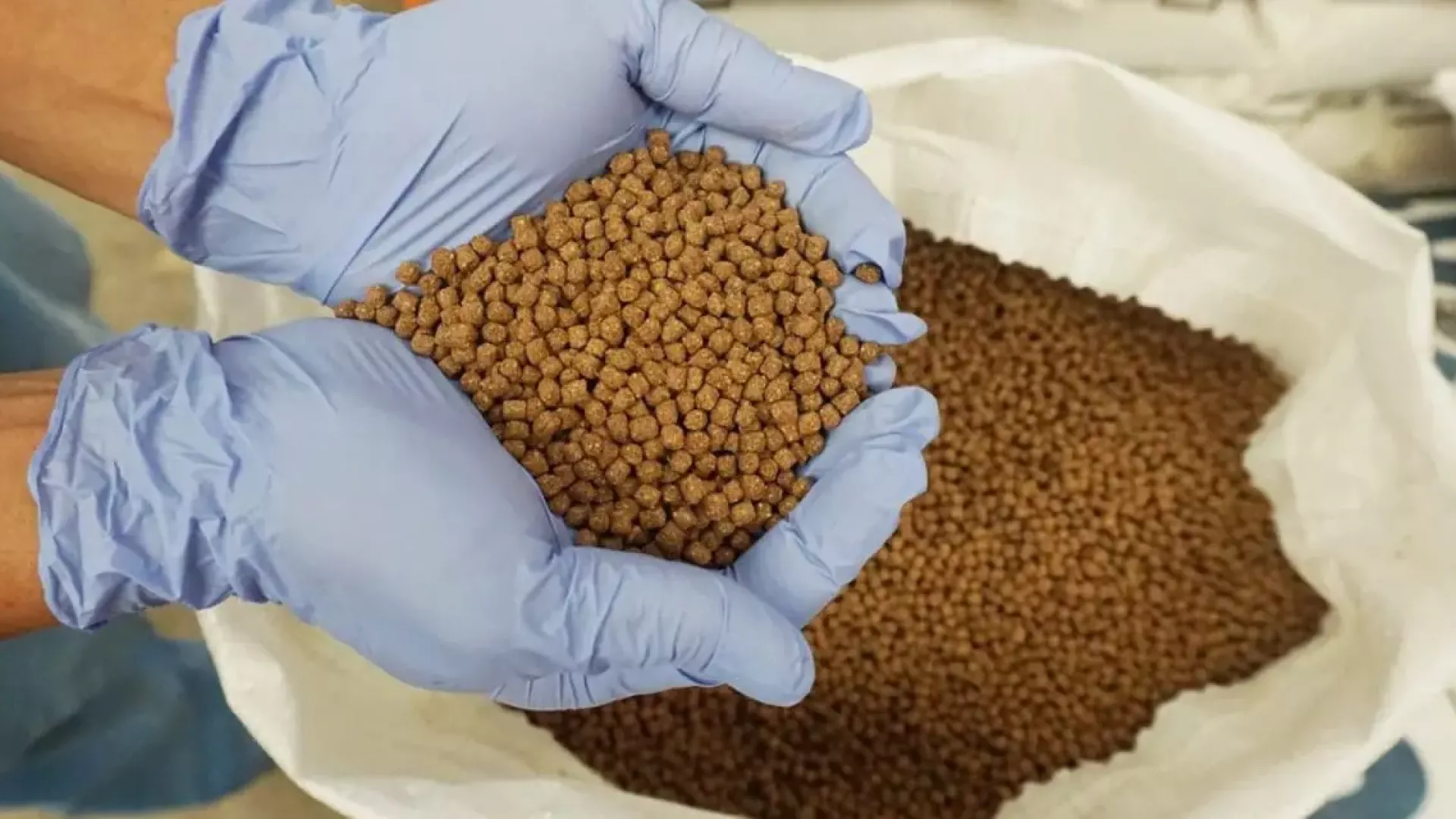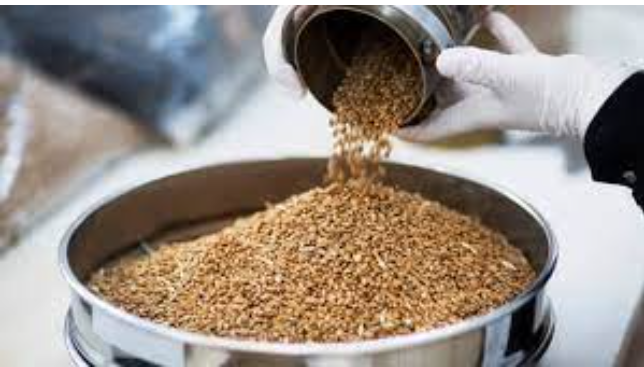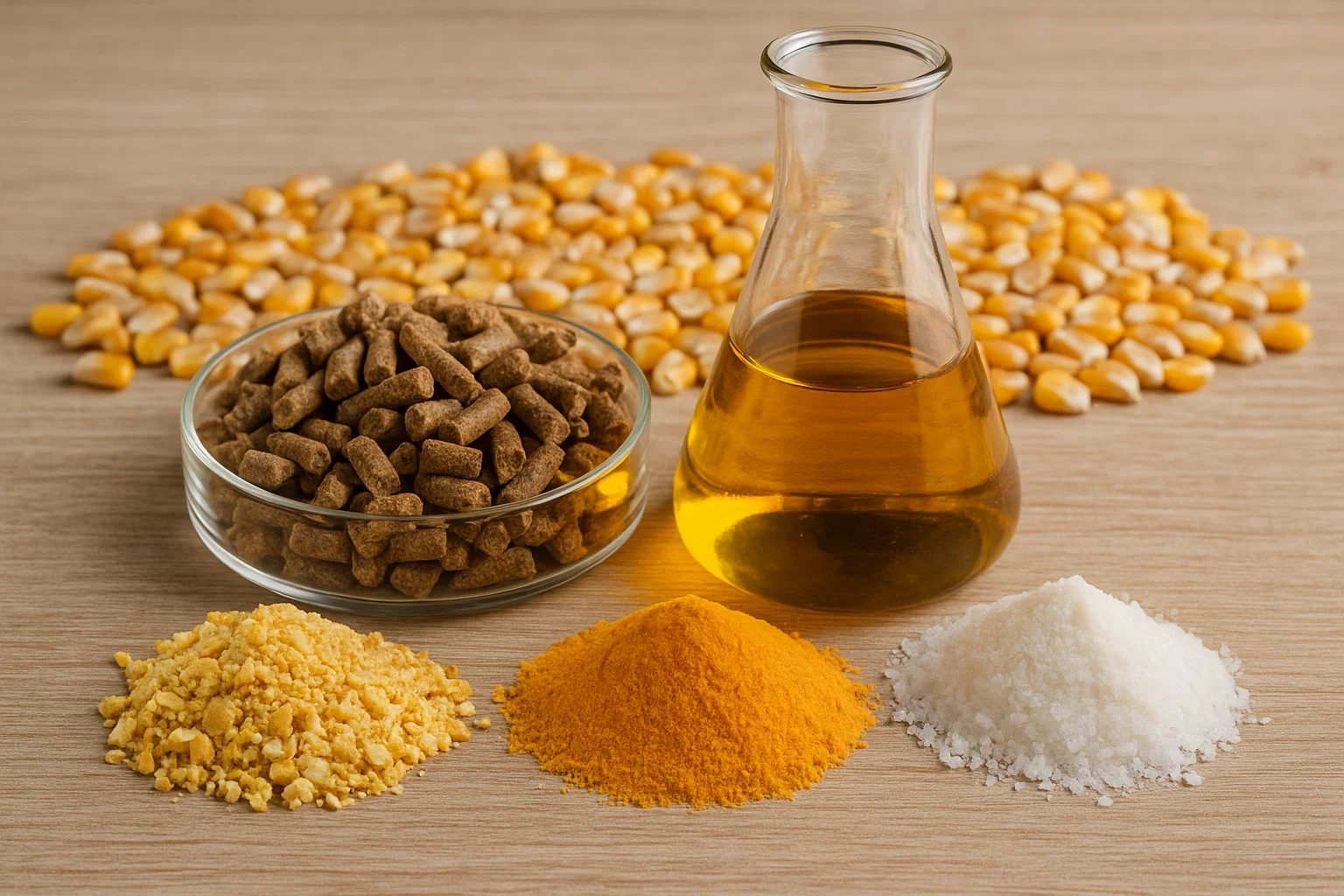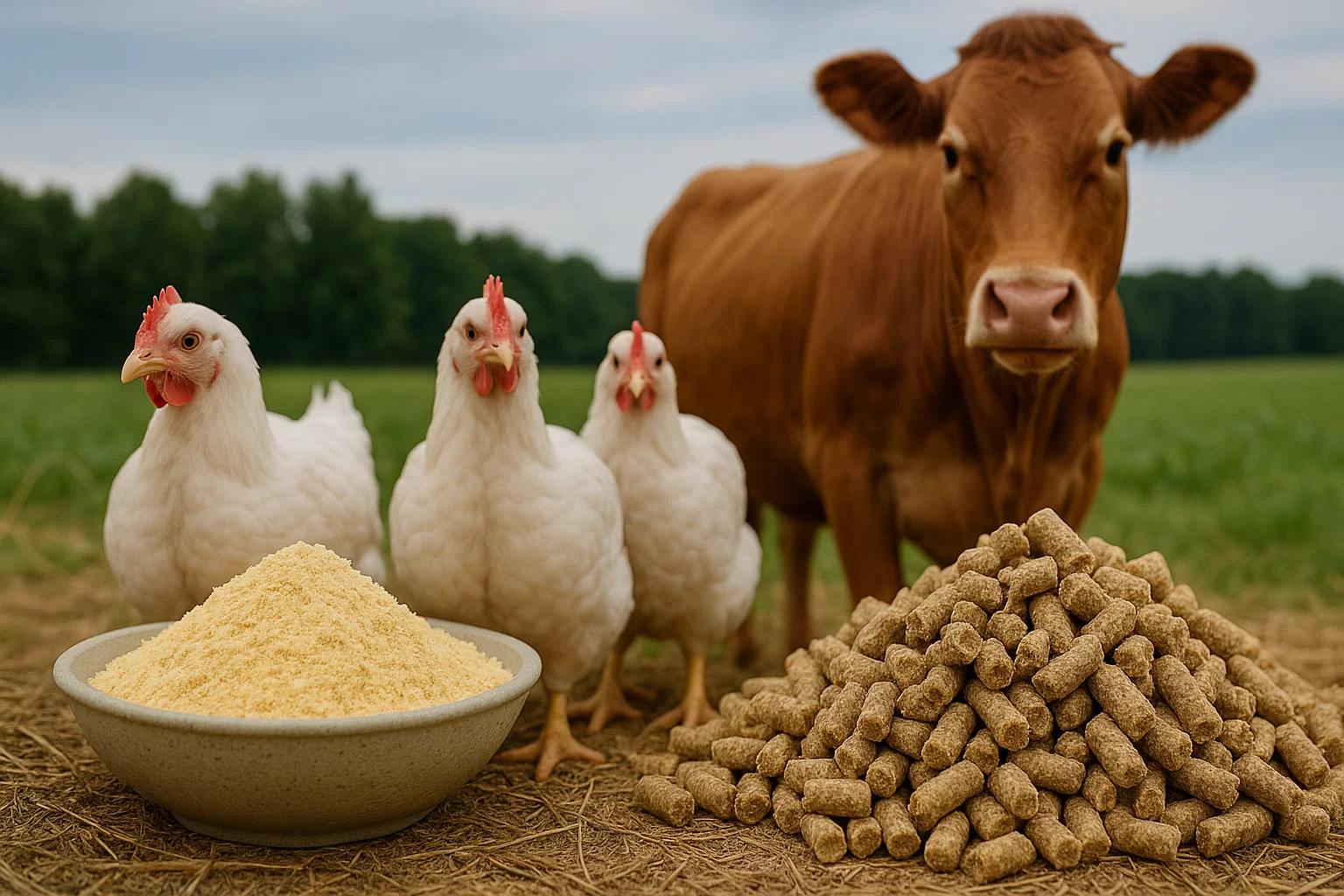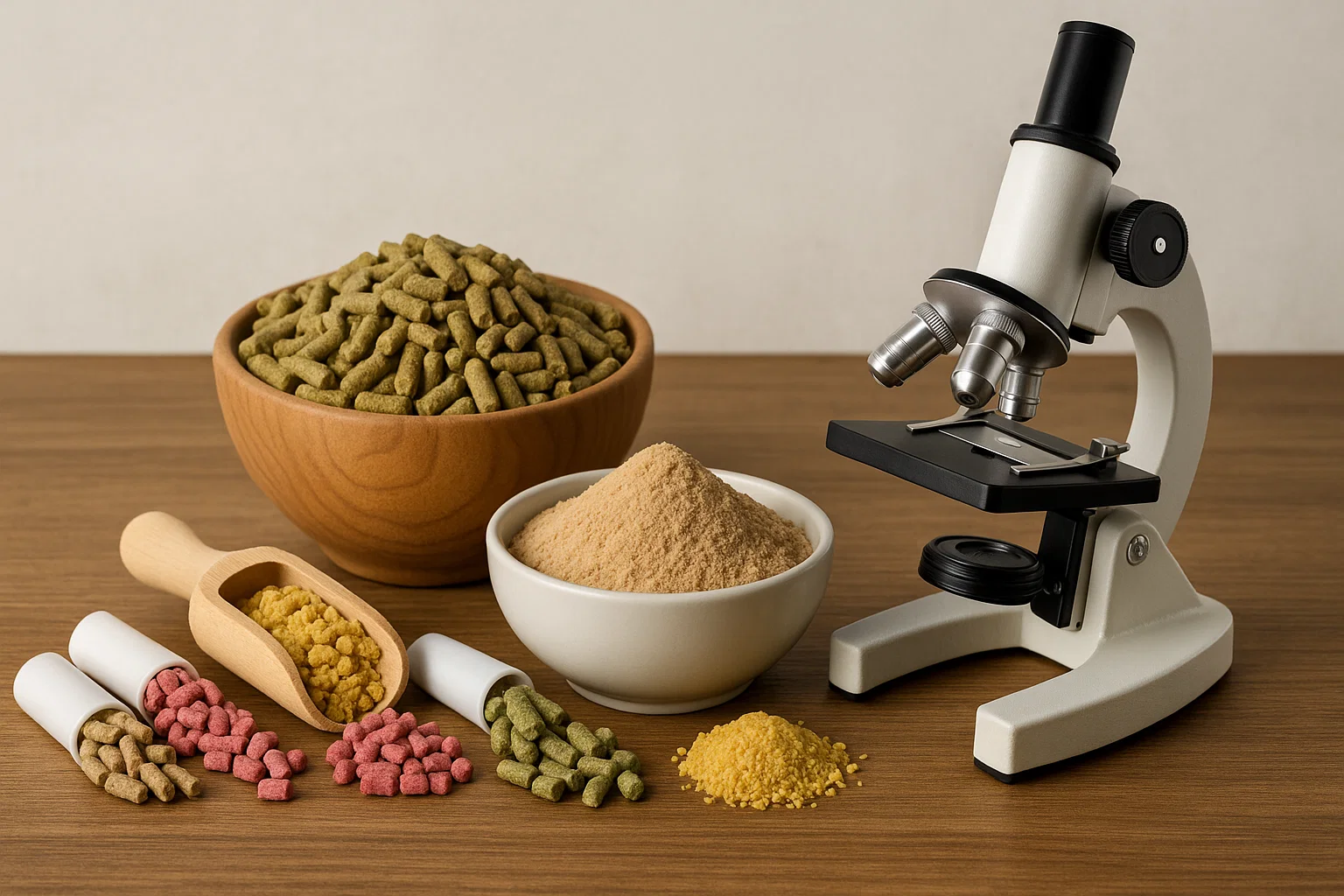Why Is It Important to Analyze the Components of Feed Additives?
In the world of animal production, not every additive serves the same purpose, and not every product labeled as a “supplement” or “booster” actually delivers results. That’s why understanding the components of feed additives is a critical step for any livestock producer or animal nutritionist. It helps determine whether a particular additive truly meets the needs of the herd or is simply an unnecessary cost.
Additives differ not only in the type of active ingredient, but also in concentration, purity, absorption rate, and how each component interacts with the rest of the diet. For example, Vitamin A at a low concentration won’t have the same effect as when included in a balanced formula with enzymes and high-quality protein. In some cases, a single unsuitable ingredient can disrupt digestion or cause toxic buildup — directly impacting growth rates and product quality.
It’s also important to note that some additives have direct effects on specific functions like digestion or immunity, while others play only a supporting role — and may not be effective on their own. For instance, using probiotics without enzymes or a proper energy source may result in minimal benefit. This makes analyzing the full composition crucial to understanding how the ingredients work together — or potentially conflict.
Moreover, analyzing the ingredient list helps you distinguish between truly effective products and those marketed with exaggerated claims. The market is full of options, many with fancy names or attractive packaging — but when you examine the formula, the active ingredients are minimal or unsupported by lab validation.
In short, evaluating the components of feed additives isn’t a theoretical exercise. It’s a practical decision-making tool that helps you assess performance, predict outcomes, and ensure the additive integrates well into your overall feeding system. The more you understand what’s inside the product, the better your chances of running a successful production cycle with minimal waste.
Core Components of Feed Additives
Every product in the feed additives industry starts from a simple principle: compensate for nutritional deficiencies and maximize the animal’s ability to absorb and benefit from its diet. It’s not just about feeding animals to fill them up — it’s about ensuring they utilize every nutrient in the ration efficiently. That’s why most formulations include a set of essential ingredients required daily by the animal, which can be grouped into three main categories — each playing a distinct and vital role in improving performance.
Vitamins and Minerals in Feed Additives
Vitamins and minerals are the backbone of most additive formulas. For example:
Vitamin A supports skin and mucosal health.
Vitamin D plays a critical role in calcium absorption and bone strength.
Vitamin E acts as a natural antioxidant, reducing oxidative stress in the animal’s body.
Minerals are equally important:
Calcium and phosphorus contribute to skeletal development.
Zinc boosts growth and enhances immune response.
A quality formulation not only includes these nutrients, but ensures they’re balanced. Excess of one mineral may inhibit the absorption of another — which is why leading nutrition companies use precise formulas tailored to the animal’s age, health status, and production stage.
Protein and Energy Sources in Feed Additives
In fattening operations, rapid weight gain depends heavily on the efficiency of feed conversion — and this is where concentrated protein and fast-absorbing energy sources come into play.
Protein provides the building blocks for muscle and tissue development. When enriched with essential amino acids like lysine and methionine — which animals can’t synthesize on their own — it becomes a powerful tool for lean weight gain.
Energy is typically supplied through high-quality vegetable oils or simple carbohydrates like glucose, helping to fuel daily activity and support performance. Without the right balance of protein and energy, animals may consume more but convert less — resulting in poor growth or lower milk/egg production.
Enzymes and Bio-Stimulants in Feed Additives
Modern feed additives often include enzymes such as phytase and amylase, which are essential for breaking down complex feed components. These enzymes help digest fibers and starches that the animal’s body can’t naturally break down — improving nutrient absorption and minimizing waste.
Bio-stimulants such as plant extracts or live yeasts promote healthy gut flora, strengthen immune response, and reduce digestive disorders. They also contribute to a more stable and consistent performance across the production cycle.
Ultimately, a successful additive is not defined by a long list of ingredients — but by a well-balanced combination that matches the animal’s needs, age, health condition, and the nature of the daily ration.
Specialized Components in Feed Additives
Beyond the basics like vitamins, protein, and energy, many feed additives contain specialized components that serve highly targeted functions. These ingredients are especially valuable during specific production phases such as rapid fattening, stress periods, or disease-prone stages. This category of feed additive components is designed to support key biological processes within the animal's body.
Antioxidants and Immune Boosters in Feed Additives
Antioxidants, such as Vitamin E and selenium, work by reducing oxidative stress inside the animal’s cells. This improves the animal’s resilience, particularly during times of heat stress, feed transitions, or high production demand. These compounds help maintain cellular health and protect against metabolic damage.
Immune stimulants, on the other hand, directly enhance the animal's immune system, reducing the need for medications and antibiotics. This is especially crucial for commercial farms aiming for clean, residue-free production, where the goal is to maintain animal health without pharmaceutical intervention.
Probiotics and Beneficial Microbes in Feed Additives
Probiotics and live yeasts have become essential ingredients in modern feed additives. These beneficial microbes help restore and maintain a healthy microbial balance in the animal’s digestive tract. By improving gut flora, they enhance nutrient absorption, stabilize digestion, and reduce common issues like diarrhea and gut inflammation, especially in young animals or those at the start of their production cycle.
Probiotics also play a preventive role by competing with harmful bacteria, making them a valuable tool in reducing disease risk naturally.
Natural vs. Synthetic Additives in Animal Feed
Natural additives are typically derived from herbs, yeasts, or organic minerals. They are widely recognized for their safety and acceptance, particularly in organic farming systems and export-focused operations where regulations favor residue-free products.
Synthetic additives, meanwhile, are manufactured in laboratories and tend to offer faster or more concentrated effects. While highly effective, they require careful dosage and monitoring, as improper use can lead to unwanted interactions or side effects. That’s why their use is often restricted to well-regulated feeding programs under veterinary supervision.
How to Assess the Quality of Feed Additive Ingredients
Not every additive labeled as “effective” actually delivers measurable results. The true quality of any feed additive starts with a detailed analysis of its components — making sure it contains the right nutrients, in the correct concentrations, and with a purity level that allows animals to fully absorb and benefit from them.
Purity and Concentration Standards for Feed Additive Ingredients
What distinguishes a high-quality additive is not just the inclusion of active ingredients — but how concentrated and stable they are. For instance, 10% of a high-purity enzyme can be more effective than 30% of a lower-grade or unstable version. Quality isn’t just a number printed on the label — it’s about consistency, bioavailability, and performance inside the feed. Top manufacturers provide lab-certified analysis for each production batch, which is a key indicator of quality assurance.
The Role of Origin and Manufacturing Date in Evaluating Feed Additives
The manufacturing source and raw material quality have a major impact on product effectiveness. Additives produced in Europe or Japan, for example, are often known for consistent quality, unlike some cheaper products where active content may vary from batch to batch.
Also, always check the production and expiration dates — some ingredients, especially vitamins, degrade over time even if stored properly. Using expired additives can result in reduced performance and even health issues in livestock.
Regulatory Compliance of Feed Additive Components
To avoid complications in export or regulatory inspections, you must ensure the product complies with both local and international veterinary standards. Certain ingredients are banned in specific countries, and some formulations require formal approval. Using non-compliant additives can result in severe financial and reputational damage.
How to Read a Feed Additive Label
The label on a feed additive package is more than just packaging — it’s the key to understanding the product’s composition, effectiveness, and proper usage. Reading it carefully helps you make an informed decision before incorporating the product into your feeding program.
What Do the Numbers and Symbols on Feed Labels Mean?
You’ll often see terms like "Crude Protein 40%" or "Vitamin A: 10,000 IU/kg" — these indicate the active ingredient concentration per kilogram of product. Always check whether those levels align with your animal’s needs at that specific growth or production stage. Also verify if the values refer to raw ingredient content or the final mixed feed.
Units such as IU (International Units), ppm (parts per million), or mg/kg (milligrams per kilogram) require a basic understanding to compare products fairly.
What Should You Check Before Purchasing a Feed Additive?
Before buying, ask yourself:
Are the ingredients clearly listed in detail?
Is there a lab certificate of analysis from an independent lab?
Are production and expiry dates clearly printed?
Does the label explain dosage and application?
Is the manufacturer reputable and known for consistent quality?
A trustworthy product is transparent and informative. If the label lacks detail or seems vague — it’s best to steer clear and look for better alternatives.
Conclusion: How to Choose the Right Feed Additive Composition for Your Farm
Choosing the components of feed additives isn’t just a technical step — it’s a strategic decision that directly affects the success of your entire production cycle. A solid understanding of each ingredient’s role, concentration, and quality will determine whether the additive helps you gain more weight, boost immunity, or ends up being just an added cost with no real impact.
If you’re running a fast-growth operation, the focus should be on ingredients like digestive enzymes, fast-absorbing proteins, and essential amino acids. These components accelerate nutrient utilization and drive quick weight gain.
On the other hand, if your priority is long-term productivity and product quality, then your additives should emphasize vitamins, trace minerals, and antioxidants that support sustained health and immune strength.
Always pay attention to the source of the additive, the transparency of its formulation, and the availability of ingredient analysis. A quality product will clearly state everything — from nutrient concentrations to usage guidelines.
The smart choice is one that balances performance, safety, and cost-efficiency — because in livestock production, every detail in your additive formula matters.

